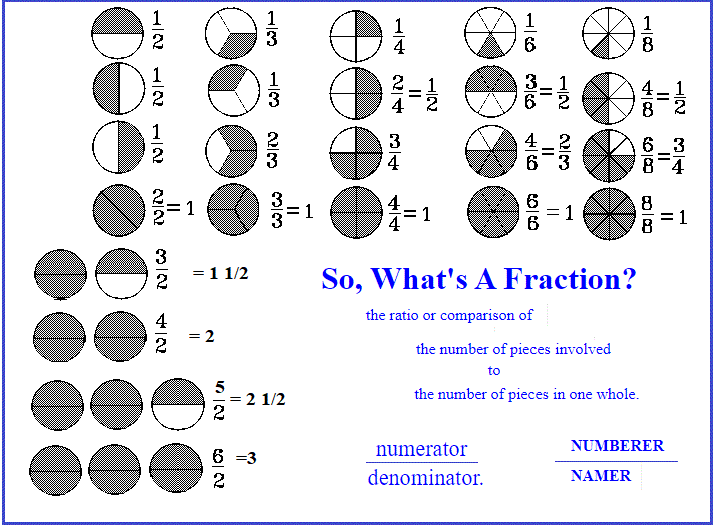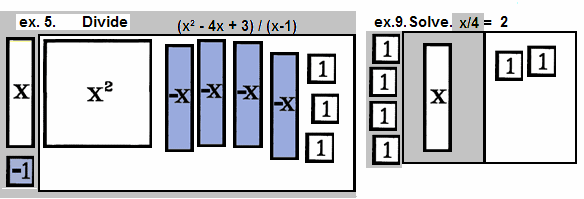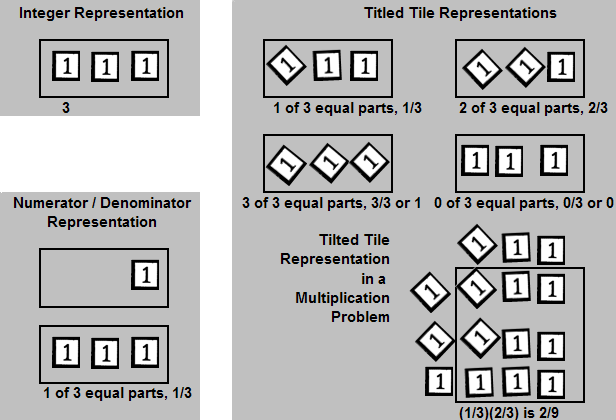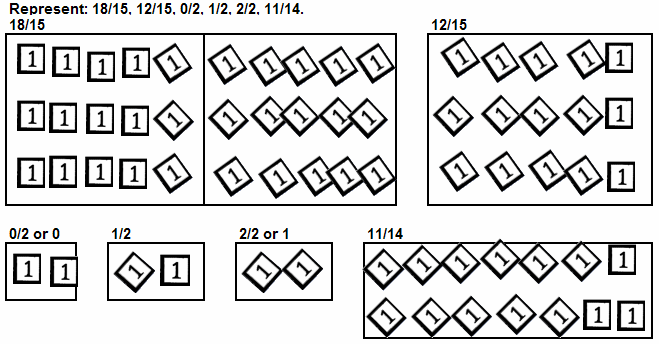
The Visual / Auditory / Symbolic / Kinesthetic Approach to Algebra
|

|
|
A fraction is a number written to compare the "number of pieces involved" to the "number of pieces in one whole." The number on the top of the fraction is the numerator, the NUMBERER . It states "how many pieces are involved." The number on the bottom of the fraction is the denominator, the NAMER . It states "the name of the size of the piece," the "number of equal pieces in one whole." 
The Term Tile representation of a fraction must convey "the number involved" vs "the number in 1 whole." Tiles and display area are used jointly to represent (involved)/(pieces in a whole). The representation must also be consistent with notation use at other times. In the unit on Algebraic Division, ex. 5 shows the division of a trinomial by the binomial x - 1 and in the unit on Solving Equations, the fraction x/4 was represented in ex. 9. when the task was to solve x/4 = 2, see below. So, the stage has been set for using the display area and tiles to signify fractions. 
Keep in mind, representing rational numbers (fractions) is significantly easier than computing with fractions and that addition and subtraction of fractions is more sophisticated even than multiplication and division of fractions. Two fraction formats have been adopted for those not faint of heart who have chosen to compute fractions with Term Tiles. Before reviewing addition or subtraction, this text will examine the non Term Tile manipulative EVEN MORE APPROPRIATE for these operations. See www.mathnstuff.com/math/spoken/here/2class/60/mult.htm.
Which format should one use? If TERMS ARE ALL OF THE SAME DEGREE, and you don't need to add or subtract, use TITLED ARRAY DISPLAY. Otherwise, use Numerator / Denominator display.
Tilted tiles are easier to use than Numerator / Denominator and they are used for easier problems. Just as fractions are more sophisticated than integers, Tilted Tile representation is more sophisticated than simple integer representation. With integer or algebraic representation, three unit tiles means three and the orientation of a tile has no meaning. With Tilted Tile fraction representation it could mean any of 4 different things and the orientation or tilt is critical to the meaning. The representations look VERY SIMILAR, so, it is CRUCIAL that one know what kind of work one is doing and the representation system used. 
Represent A Fraction by Tilted Array Display.

Represent A Fraction by Numerator / Denominator Display.
|
 
 www.termtiles.com, Unit 29 © 2008, A. Azzolino |